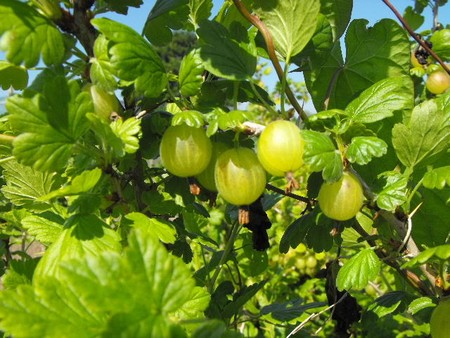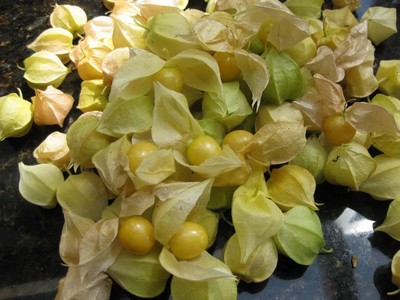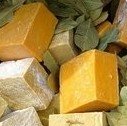Growing Gooseberries -
Soil, Care, Pruning and Harvesting the Gooseberry Patch
GROWING GOOSEBERRIES - Overview
Gooseberries usually grow in a bush, although they can also be trained to grow against a wall or fence and commonly known as a gooseberry patch. With the various varieties of gooseberries around from plants that produce tiny, sweet yellow sugary fruits to ones that produce large, red dessert fruit one can extend the picking season from early spring right through to the end of summer.
The different varieties of gooseberries means that it is possible to produce gooseberries that produce crops from late spring right through the summer. Although traditionally grown as a bush, they can also be grown along a cordon, and trained to grow along a wall or fence.
GROWING GOOSEBERRIES - Soil and Position

Growing gooseberries in full sun
Position your gooseberry patch so that they will have full sun. Gooseberries love to grow in a sunny site which has well-drained soil that is kept moist. Therefore a perfect fruit to grow in a large container, as under these conditions the soil's moisture content is easily controlled. However, gooseberries will really grow in any type of soil, as long as it has been enriched with well-rotted manure and composting material.Gooseberries should never be planted where frost collects as they are frost-tender and as they flower in early spring, the frost will end up damaging the plant and subsequent fruit.
GROWING GOOSEBERRIES - How many Gooseberry Plants do you Need?
When growing gooseberries the plants should be planted out in the autumn, with spacings between each plant at 1.5 meters. Mulch well with well-rotted compost around each plant to retain the moisture content in the soil and water well, never letting the soil dry out. Repeat the mulching process every spring.
In mature plants remove any shoots that appear at the base of the plant less than 9 inches off the ground.
Growing gooseberries also means a free invitation to the birds in the neighborhood to dine! If you find that you are loosing too much fruit to the birds, you may have to cover the bush with netting to keep them out.
GROWING GOOSEBERRIES -Pruning
In summer you can prune the side shoots back to about 5 leaves to encourage fruit buds to form.
GROWING GOOSEBERRIES - Thining
GROWING GOOSEBERRIES - Raising New Plants
Dig a trench about 15 cm deep and put a layer of sharp sand at the bottom. Bury your cuttings so that only 2-3 buds are showing, and they are about 8-9 cm apart. They will then be ready for transplanting the following autumn when they should have rooted by then.
Cape Gooseberries
As a kid I used to love peeling open the papery outside to reveal the golden globe of fruit inside. The berries aren't very big, and have very small seeds that you don't need to bother about. The fruit is not sweet, however, and if you get a very sour berry it can definately make your eye-balls twitch! Choose the berries that are more orange or deep yellow in color, as these will be the sweeter fruit to eat.
However, it's because of its tart flavor that people have used the Cape Gooseberry for pies, tarts, and jams.
GROWING GOOSEBERRIES - Pests and Diseases
Another problem with growing gooseberries is mildew, recognizable by a white, powdery residue that sits on the leaves, shoots and fruits of the plant. The growths of the shoots will often be distorted if the problem has existed for a time.
Cut out and destroy the parts affected and then wash down with a weak solution of washing soda. Another solution for powdery mildew on gooseberries is to take 1 cup chamomile leaves and place in a non-metal bowl. Add 3 cups of boiling water and allow to steep until cool. Strain. Dilute with equal parts of mixture to water. Spray on affected areas.
Another pest that you have to look out for on your gooseberry bushes are caterpillars. These will decimate the leaves on the plants and reduce your plants to just the stalks.
Treatment for caterpillars is to hand-pick them off your plants as best you can and destroy them as soon as you see them.
Homemade Organic Pesticide Recipe for Sucking Insects
You can also treat them with the following homemade organic pesticide recipe as this organic pest control is useful against sucking insects and some caterpillars.
90 g chopped garlic cloves
2 T mineral oil or liquid paraffin
15 g of pure soap or soap flakes
500 ml warm water.
Mix garlic and oil together and let is steep for 48 hours. Dissolve grated soap or flakes in warm water and then mix the 2 solutions together and then strain. Use 1 part mixture to 50 parts water. Spray as usual.
Another excellent remedy for the gooseberry caterpillar is to sprinkle soot on the plants just as they are beginning to open their leaf buds.
Books on Gooseberries
You can Add your Own Comments and Pages on How to Grow Gooseberries!
We have lots of pages where you can contribute to throughout this homesteading website. We love hearing from our readers, and hope you will be one of those we hear from too.Feel free to add your own experiences on how to grow gooseberries here. To do this use the form below.
Leave a Comment
Do you have anything that you would like to add after reading this page? We would love to hear your thoughts. If you can add additional information to what has been written here you will be adding value to the website! No need to have any special skills - just type and submit. We will do the rest!
Other Comments
Click below to see comments from other visitors to this page...
Very healthy plants but no gooseberries?? 




I planted my gooseberry tree years ago. i have yet to see one berry !!!! i,m not even sure when they are supposed to fruit? Would any one be able to tell …
No gooseberries this year 




We have had our gooseberry bush for the past 7 years and has given us minimal berries..but enough for a batch of jam. This year nothing...It was here when …
how to get gooseberry bushes to fruit Not rated yet
I have an older gooseberry bush that I have been harvesting around Memorial Day, but now the fruit is very small. I do not need any this year as I have …











New! Comments
Do you have something of value to add? Leave me a comment in the box below.